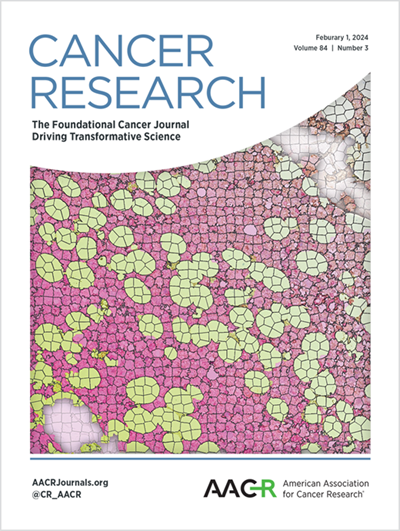CSTF2 Supports Hypoxia Tolerance in Hepatocellular Carcinoma by Enabling m6A Modification Evasion of PGK1 to Enhance Glycolysis
IF 12.5
1区 医学
Q1 ONCOLOGY
引用次数: 0
Abstract
Cleavage stimulation factor subunit 2 (CSTF2) is a fundamental factor in the regulation of 3'-end cleavage and alternative polyadenylation of pre-mRNAs. Previous work has identified a tumor-promoting role of CSTF2, suggesting that it may represent a potential therapeutic target. Here, we aimed to elucidate the mechanistic function of CSTF2 in hepatocellular carcinoma (HCC). CSTF2 upregulation was frequent in HCC, and elevated levels of CSTF2 correlated with poor patient prognosis. While CSTF2 inhibition did not suppress HCC growth under non-stress conditions, it supported tolerance and survival of HCC cells under hypoxic conditions. Mechanistically, CSTF2 increased PGK1 protein production to enhance glycolysis, thereby sustaining the energy supply under hypoxic conditions. CSTF2 shortened the 3' untranslated region (3' UTR) of phosphoglycerate kinase 1 (PGK1) pre-mRNA by binding near the proximal polyadenylation site (pPAS). This shortening led to a loss of N6-methyladenosine (m6A) modification sites that are bound by YTH N6-methyladenosine RNA-binding protein F2 (YTHDF2) and increase degradation of PGK1 mRNA. Concurrently, hypoxia increased m6A modification of PGK1 mRNA near the pPAS that was recognized by the YTH N6-methyladenosine RNA-binding protein C1 (YTHDC1), which recruited CSTF2 to enhance the shortening of the PGK1 3’-UTR. A small molecule screen identified masitinib as an inhibitor of CSTF2. Masitinib counteracted PGK1 upregulation by CSTF2 and suppressed the growth of HCC xenograft and patient-derived organoid models. In conclusion, this study revealed a function of CSTF2 in supporting HCC survival under hypoxia conditions through m6A modification evasion and metabolic reprogramming, indicating inhibiting CSTF2 may overcome hypoxia tolerance in HCC.CSTF2 通过使 m6A 修饰逃避 PGK1 来增强糖酵解,从而支持肝细胞癌的缺氧耐受性
裂解刺激因子亚基 2(CSTF2)是调节前 mRNA 3'-end 裂解和替代多腺苷酸化的基本因子。以前的研究发现 CSTF2 有促进肿瘤生长的作用,这表明它可能是一个潜在的治疗靶点。在此,我们旨在阐明 CSTF2 在肝细胞癌(HCC)中的机制功能。CSTF2 在 HCC 中频繁上调,且 CSTF2 水平升高与患者预后不良相关。抑制 CSTF2 并不能抑制非应激条件下的 HCC 生长,但却能支持 HCC 细胞在缺氧条件下的耐受和存活。从机理上讲,CSTF2能增加PGK1蛋白的生成,从而促进糖酵解,维持缺氧条件下的能量供应。CSTF2通过结合近端多聚腺苷酸化位点(pPAS)缩短了磷酸甘油酸激酶1(PGK1)前mRNA的3'非翻译区(3' UTR)。这种缩短导致被 YTH N6-甲基腺苷 RNA 结合蛋白 F2(YTHDF2)结合的 N6-甲基腺苷(m6A)修饰位点缺失,增加了 PGK1 mRNA 的降解。同时,缺氧会增加 PGK1 mRNA 在 pPAS 附近的 m6A 修饰,这种修饰会被 YTH N6-甲基腺苷 RNA 结合蛋白 C1(YTHDC1)识别,后者会招募 CSTF2 来加强 PGK1 3'-UTR 的缩短。小分子筛选确定了马西替尼是 CSTF2 的抑制剂。马西替尼抵消了 CSTF2 对 PGK1 的上调作用,抑制了 HCC 异种移植和患者衍生类器官模型的生长。总之,本研究揭示了CSTF2在低氧条件下通过m6A修饰逃避和代谢重编程支持HCC生存的功能,表明抑制CSTF2可克服HCC的低氧耐受性。
本文章由计算机程序翻译,如有差异,请以英文原文为准。
求助全文
约1分钟内获得全文
求助全文
来源期刊

Cancer research
医学-肿瘤学
CiteScore
16.10
自引率
0.90%
发文量
7677
审稿时长
2.5 months
期刊介绍:
Cancer Research, published by the American Association for Cancer Research (AACR), is a journal that focuses on impactful original studies, reviews, and opinion pieces relevant to the broad cancer research community. Manuscripts that present conceptual or technological advances leading to insights into cancer biology are particularly sought after. The journal also places emphasis on convergence science, which involves bridging multiple distinct areas of cancer research.
With primary subsections including Cancer Biology, Cancer Immunology, Cancer Metabolism and Molecular Mechanisms, Translational Cancer Biology, Cancer Landscapes, and Convergence Science, Cancer Research has a comprehensive scope. It is published twice a month and has one volume per year, with a print ISSN of 0008-5472 and an online ISSN of 1538-7445.
Cancer Research is abstracted and/or indexed in various databases and platforms, including BIOSIS Previews (R) Database, MEDLINE, Current Contents/Life Sciences, Current Contents/Clinical Medicine, Science Citation Index, Scopus, and Web of Science.
 求助内容:
求助内容: 应助结果提醒方式:
应助结果提醒方式:


